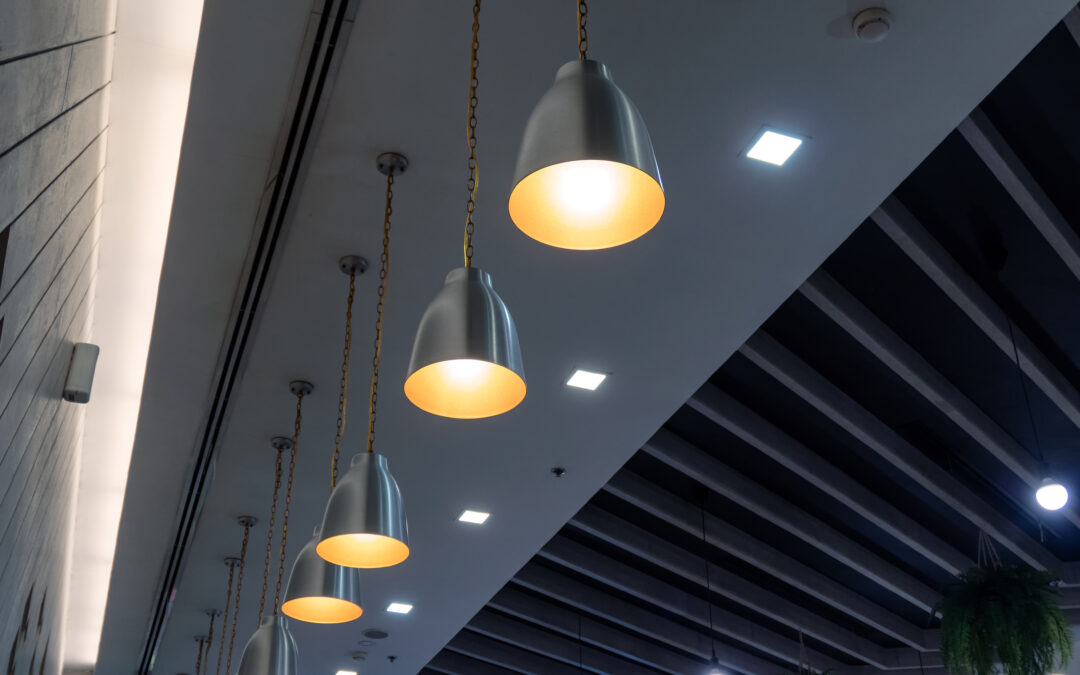Recessed lighting, with its clean lines and versatility, has become a popular choice for homeowners looking to give some character to and highlight their living spaces. However, recessed lighting installation can be daunting. Let’s review the process, covering everything from cost considerations and aesthetic benefits to best practices for recessed lighting installation.
Costs Breakdown of Recessed Lighting Installation in Denver
Understanding the cost of recessed lighting installation is crucial for budgeting and planning. Several factors influence the final price, including the number of fixtures, the complexity of the installation, and the materials used.
- Fixture and Bulb Costs: The price of recessed fixtures varies depending on the trim style, size, and bulb type. LED fixtures are generally more expensive upfront but offer long-term energy savings.
- Labor Costs: Professional installation costs in Denver typically range from $50 to $100 per fixture, depending on the complexity of the wiring and ceiling access. Factors that increase labor costs include difficult wiring situations, insulation interference, and the need for drywall repair.
- Permits and Inspections: Depending on the scope of the project, you may need to obtain permits and schedule inspections, which can add to the overall cost.
- Additional Materials: Wiring, junction boxes, and other necessary materials will also contribute to the final expense.
It’s essential to obtain detailed quotes from multiple licensed electricians in Denver to compare prices and ensure you’re receiving a fair estimate.
Unveiling the Aesthetic and Functional Advantages of Recessed Lighting
Beyond simply illuminating a room, recessed lighting offers a multitude of benefits that contribute to both the ambiance and practicality of your Denver home. Firstly, the space-saving nature of recessed fixtures is paramount, particularly in homes with lower ceilings. By integrating light sources directly into the ceiling, you eliminate bulky fixtures that can visually shrink a space.
It also creates a contemporary and sophisticated aesthetic. Its minimalist design seamlessly integrates with various interior styles, creating a clean and uncluttered look. Strategic placement of recessed lights can highlight architectural features, artwork, or specific areas within a room, adding depth and dimension.
In an era of rising energy costs, energy efficiency is a significant consideration. Recessed lighting, when paired with LED bulbs, significantly reduces energy consumption compared to traditional incandescent lighting. LEDs boast a longer lifespan and generate less heat, contributing to lower utility bills and a more sustainable home.
Choosing the Right Trim and Bulb Types
Selecting the appropriate trim and bulb types is crucial for achieving the desired lighting effect.
Trim Types:
- Baffle Trim: Reduces glare and provides a softer, diffused light.
- Reflector Trim: Directs light downwards, creating a focused beam.
- Gimbal Trim: Allows for adjustable light direction, ideal for highlighting specific areas.
- Wall Wash Trim: Creates a uniform wash of light across a wall, perfect for showcasing artwork or textured surfaces.
Bulb Types:
- LED Bulbs: The most energy-efficient option, offering a long lifespan and various color temperatures.
- Halogen Bulbs: Provide a bright, crisp light but consume more energy than LEDs.
- Incandescent Bulbs: The least energy-efficient option, being phased out due to their high energy consumption.
Consider the room’s function and the desired ambiance when selecting trim and bulb types. For example, warm-toned LEDs are ideal for creating a cozy atmosphere in living rooms and bedrooms, while cool-toned LEDs are suitable for task lighting in kitchens and offices.
Professional Installation vs. DIY: Weighing the Risks and Rewards
While DIY recessed lighting installation may seem tempting, it’s crucial to understand the risks involved. Electrical work can be dangerous and requires specialized knowledge and skills.
- Ensures compliance with electrical codes and safety standards.
- Provides expert advice on fixture placement and lighting design.
- Minimizes the risk of electrical hazards and fire.
- Guarantees proper wiring and secure fixture mounting.
DIY Approach:
- Requires a thorough understanding of electrical wiring and safety procedures.
- Increases the risk of electrical shocks, fires, and improper installations.
- May void home insurance policies in case of electrical accidents.
- Can lead to costly repairs if done incorrectly.
- For most homeowners in Denver, professional installation is the safest and most reliable option.
Avoiding Common Pitfalls: Best Practices for Recessed Lighting Installation
Several common mistakes can compromise the quality and safety of recessed lighting installations.
- Improper Fixture Placement: Carefully plan fixture placement to ensure even light distribution and avoid glare.
- Incorrect Wiring: Ensure all wiring connections are secure and comply with electrical codes.
- Insufficient Ventilation: Recessed fixtures generate heat, requiring adequate ventilation to prevent overheating.
- Ignoring Insulation: Proper insulation around recessed fixtures is essential for preventing energy loss and condensation.
- Overloading Circuits: Avoid overloading circuits by calculating the total wattage of all fixtures.
- Failing to test the system: Always test the system before closing up the ceiling.
Contact Hometown Electrical Services For Recessed Lighting Installation You Will Love for Years to Come
For reliable and professional recessed lighting installation in Denver, trust Hometown Electrical Services. Our team of licensed and experienced electricians is dedicated to providing high-quality workmanship and exceptional customer service. Contact us today for a free consultation and let us illuminate your Denver home with expert recessed lighting solutions.

